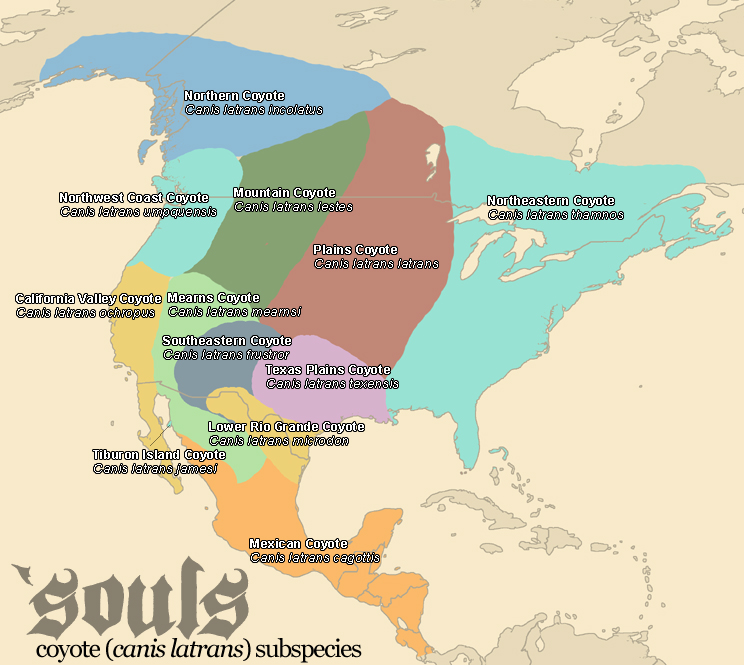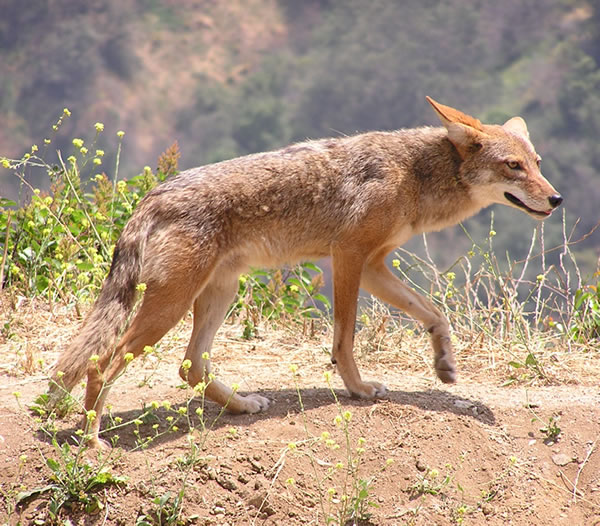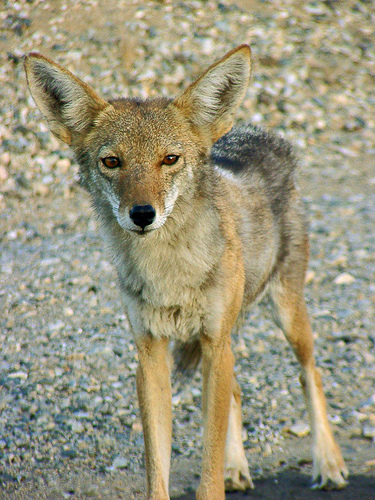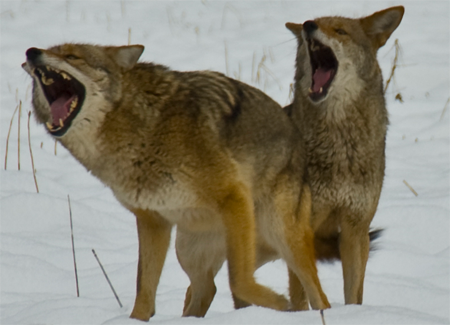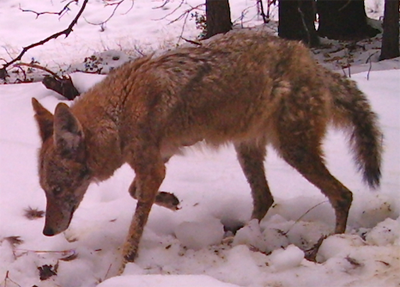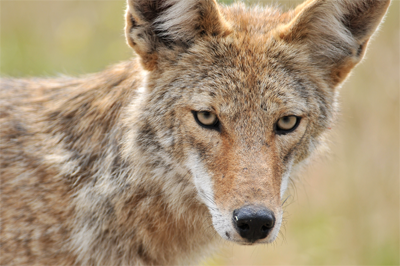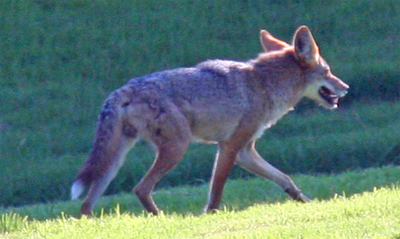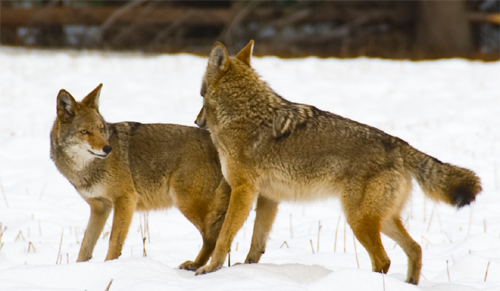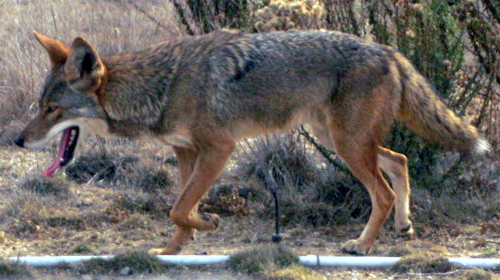California Valley Coyote (''Canis latrans ochropus'')
See our RP Guide for more extensive information regarding coyotes.
On this page... (hide)
- 1. Common Names
- 2. 'Souls Range
- 3. Appearance
- 4. Other Characteristics
- 5. More Images
- 6. Citations
1. Common Names
California Valley Coyote
2. 'Souls Range
California and Baja California.
3. Appearance
The California Valley coyote is medium-sized, built slightly and weighing less than their eastern Mountain Coyote neighbors. These coyotes generally have golden-gray fur, and are not as pale or dully colored as coyotes found in the middle of the continent. California Valley Coyotes typically have a bit more golden-yellow hue than gray as when compared to their northerly neighbors. They typically do not possess rusty or reddish hues, however, and tend toward ochre and yellow as their dominant hues.
Canis latrans ochropus, from justinjohnsen@Flickr
4. Other Characteristics
There are three "Californian" species of coyote. They are indistinguishable from one another aside from the range they occupy. For purposes of conciseness and lack of differentiating characteristics, they have been combined under one subspecies.
- California Valley Coyote (Canis latrans ochropus): California west of the Sierra Nevadas
- San Pedro Martir Coyote (Canis latrans clepticus): northern Baja California and southwestern California
- Peninsula Coyote (Canis latrans peninsulae): Baja California, Mexico
4.1 Survival
Although these coyotes were doing quite well in 1988, various factors after the apocalypse contributed to their decline -- a large-scale war occurred in the Southern California area between wolves, coyotes, and hybrids -- the conflict was quite bloody and destructive, and many creatures died. As a result, many coyotes found in this area are hybrids, as mating and reproduction opportunities were rather short following the wars.
4.2 Luperci
Prior to the 2006 war, there were few Luperci in these areas; though many coyotes lived in the cities and around old human dwellings, they were entirely feral, having no ability to adapt to civilized ways of life. Following the wars, Luperci are more common, but the lifestyle in this area is still largely feral. Rare humanized encampments can be found along the west coast, however, as Luperci from the eastern Asian coast are slowly adapting sailing technology from Europe.
5. More Images
6. Citations

